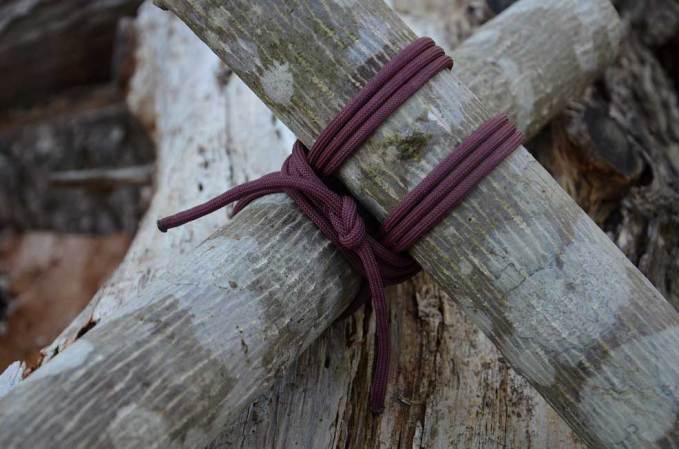

This article was originally featured on Field and Stream.
Are you familiar with the fur-bearing trout? This mythical creature has been part of Scottish and Icelandic folklore since the 17th century. In 1929, there was even a fur-bearing trout catch reported in the Arkansas River, where it was theorized that a large amount of hair tonic accidentally dumped into the water caused the trout to grow a thick coat of polar bear-like fur. These fish are, of course, pure fiction, though I’d love to own one of the ancient taxidermied fur trout that pop up in bars and museums from time to time. It would look great next to my jackalope. But while a fur-bearing fish isn’t like to smack your spinner or gulp your live shiner, catching something with fur can happen.
According to this (vague) story on Whiskyriff.com, a couple of friends ice fishing in an undisclosed location were rolling video on what they assumed was a nice fish on a tip-up line, only to be shocked when a muskrat pops through the hole. The fuzzy little fellow quickly spits out the shiner and dives back in. This kind of mammalian ice catch isn’t that uncommon, though. In February 2022, Massachusetts angler Keith Poisant made headlines when he hooked a huge otter through the ice. This kind of thing happens more than people think and not just on the hardwater.
The Usual Suspects
I know someone who was fly fishing for brown trout at night when he snagged an ornery beaver that started tail slapping all around his drift boat. I’m betting his reel’s drag hasn’t spun at higher RPMs since. But there are certain locations and scenarios where having a critter actually take shot at your bait or lure is a real possibility. The craziest first-hand account I ever heard was from a friend trolling Barnegat Bay in New Jersey for striped bass. When his rod doubled over, he was convinced he had a record-class fish on the line only to have that glory dashed when a harbor seal surfaced with his shad swimbait dangling from its lip. The seal looked at my buddy, and then dove back under and took 100 yards of line off the reel in 3 seconds before it broke off.
That’s a very rare occurrence, but if you talk to southern anglers that fish were gators swim, you’ll hear plenty of stories about these reptiles—usually the smaller ones—grabbing cut baits and even attacking topwater lures. Though I’ve never experienced that in the States, I have witnessed the aggression of juvenile caimans in South America, which seemed particularly attracted to Spook-style walking topwaters that produced a loud clack.
Birds are probably the most common non-aquatic animal that anglers hook, and this can happen in many ways. Coastal birds like sea gulls and terns routinely grab lures and live baits fished near the surface, especially during the frenzy of a striped bass, bluefish, or Spanish mackerel blitz. Cormorants will dive down 5 feet or more to feed, and more than a few times I’ve had these pesky and often problematic birds wind up on my hook. Of course, if you want to pin down the most common critter bycatch, one that thousands of anglers deal with every year, it’s turtles. Whether you’re fishing worms for bluegills or shad chunks for catfish, turtles will find it. It’s almost unavoidable, but what you can avoid is making an annoying situation worse whether you hook a little painted turtle or a mad otter.
What to Do When Unexpected Animals Bite
Regardless of the scenario, the safety of the animal should take top priority when deciding how to handle an inadvertent hooking. Naturally, it’s a case-by-case thing. Small turtles, as an example, are relatively harmless. If the hook is visible and the turtle will cooperate, try to remove it. Turtles, however, often retract their heads into their shells when scared, in which case, prodding and prying to remove a hook can cause more damage than simply clipping it off as close as possible and letting the animal work the hook out or have it rust out.
Snapping turtles, which plague me in several spots where I like to target catfish and bowfins, are another matter. Given their ability to reach around with their long necks and bite you, I never attempt to free the hook from a snapping turtle. I have a pocketknife ready to cut the leader as close as possible. Beyond their ability to harm you, keep in mind that snappers—even smaller ones—are incredibly strong. Most of the time, once they get close enough to see you, they’ll go on the defensive by burying in the mud or backing away quickly. Trying to use your rod to force a turtle—or any larger animal, for that matter—onto land is a fast way to destroy your gear while putting unnecessary stress on the animal. During that trip to South America, I watched a guide hell bent on getting his lure back grab a baby caiman that had hit a topwater. The caiman shook and sent a hook into his hand. As the reptile rolled in the boat, it violently tore the hook out of the guide’s finger and snapped a rod in the process.
Birds can often be dealt with more easily, but again, the risk to your safety varies by bird. Whenever birds of prey like hawks or eagles are involved, it’s best to notify wildlife authorities for instruction whenever possible, as many of them are protected. I’ve released many hooked and tangled sea gulls, though, by grabbing them gently behind the head and placing a rag over their eyes, which calms them down. If you are ever unlucky enough to hook something furry and it’s experiencing no further trauma beyond a sore lip, however, your best bet is to cut the line as close as possible, but don’t try to fight a seal or otter or beaver right up to the boat. Most of the time when these creatures are hooked, they break the line for you. On the other hand, if you ever hook a fur-bearing trout, play it gently and reach out to me with the photos first before contacting the local news.















